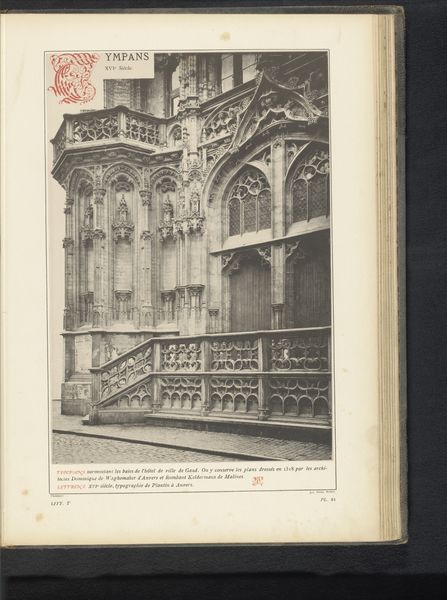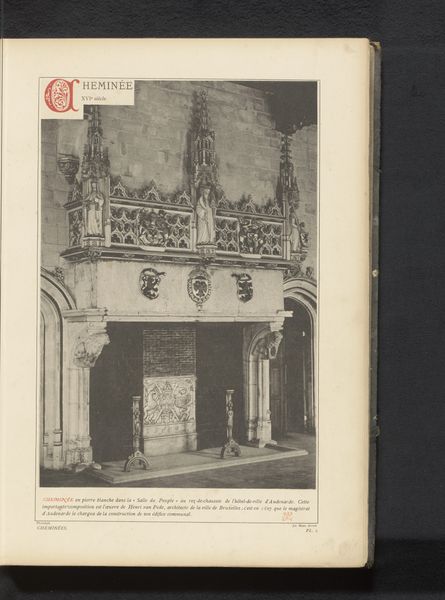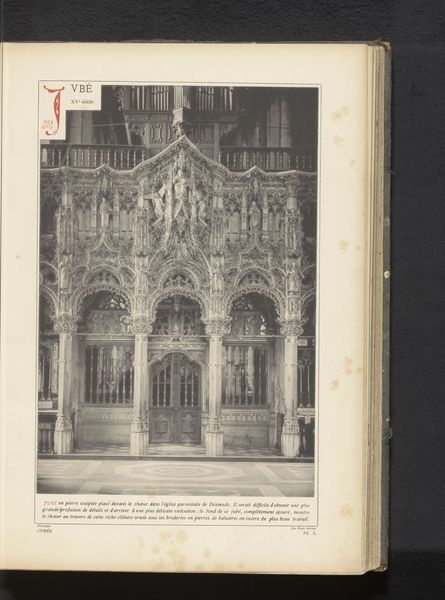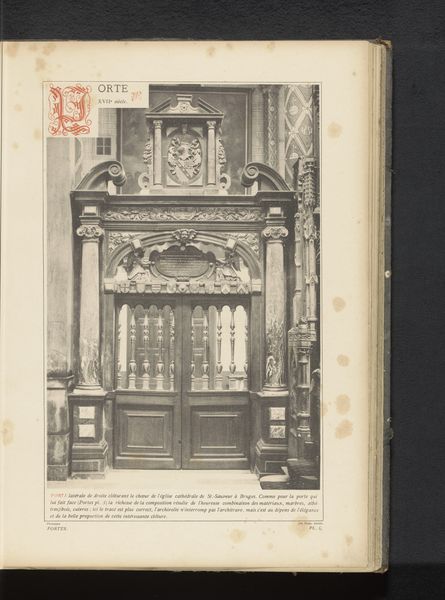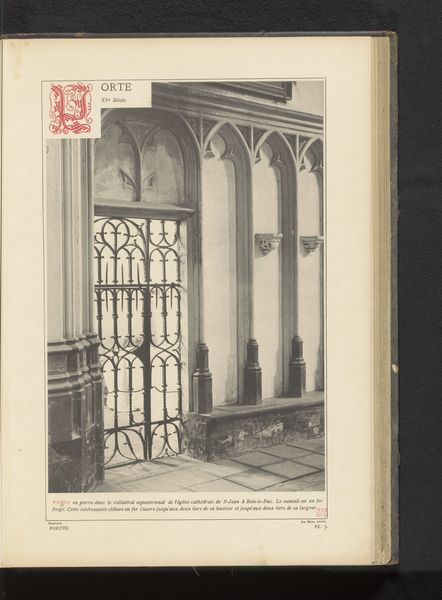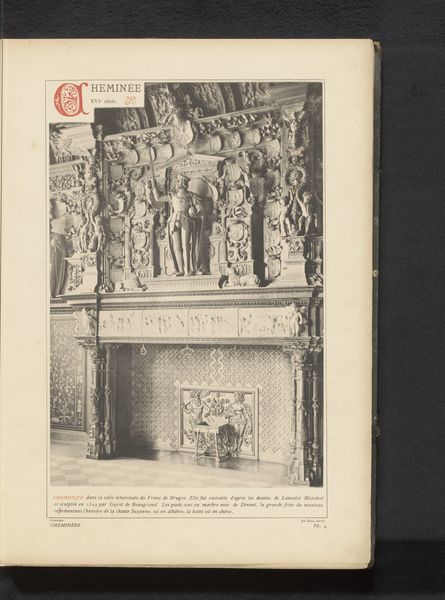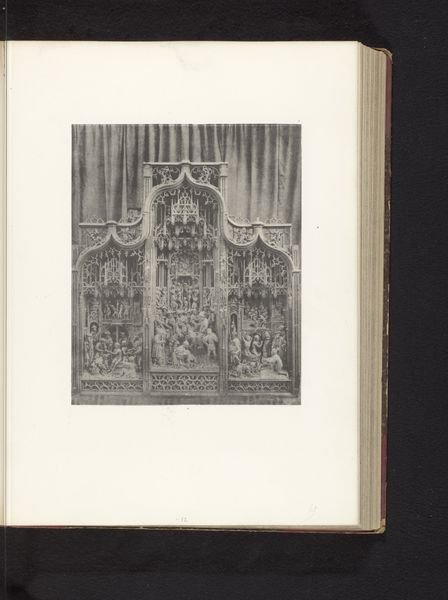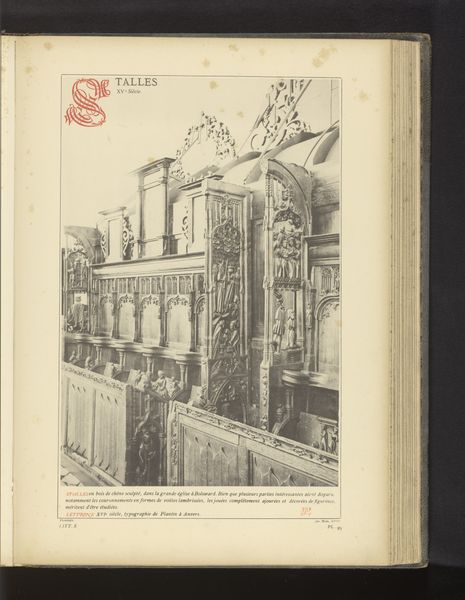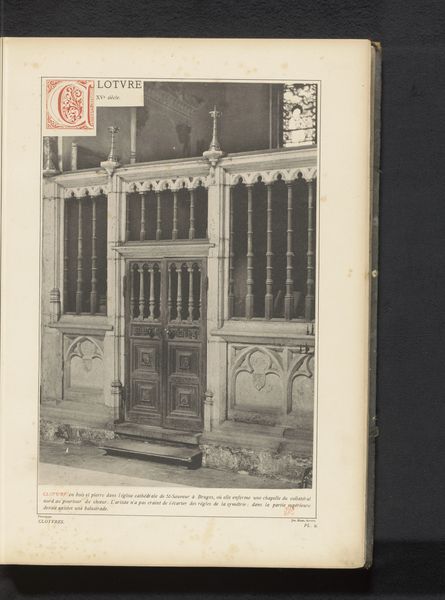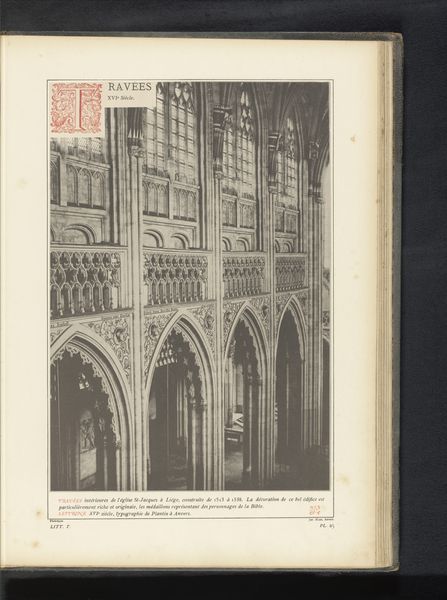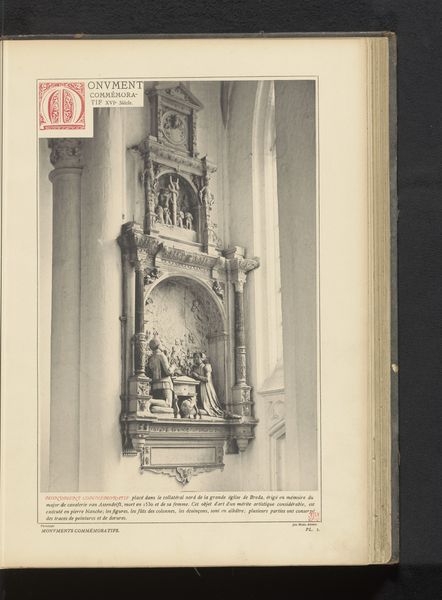
Schoorsteenmantel in de wethouderzaal op de begane grond van het stadhuis van Kortrijk, België before 1887
0:00
0:00
print, relief, photography, architecture
#
medieval
# print
#
relief
#
photography
#
romanesque
#
geometric
#
cityscape
#
architecture
Dimensions: height 337 mm, width 228 mm
Copyright: Rijks Museum: Open Domain
Curator: So here we have a photographic print of the "Schoorsteenmantel in de wethouderzaal op de begane grond van het stadhuis van Kortrijk, België," dating from before 1887. The photo shows an elaborately carved stone mantelpiece. It's quite impressive. What strikes you first? Editor: The sheer scale of it, and the detail! It feels very ornate, almost overwhelming. What's particularly interesting is the photographic print; it seems almost a commentary on architectural pieces as functional objects. How might its production process influence the understanding of art here? Curator: Precisely. By using a photographic print to document the fireplace, it makes us consider labor, class, and reproducibility. Instead of valuing unique artistry, we might explore questions of production and documentation through photography as a tool of social or commercial advancement. Editor: It makes you think about the accessibility too, doesn't it? This kind of artwork can only be made and appreciated through specific means – financial resources and social conditions dictate the types of art made. And even though it’s a photograph of a sculpture in architecture, doesn't that in some ways create a consumer relationship? Curator: It does! Who is consuming the image and why? Is the fireplace itself the art, or is the photograph of the fireplace the artifact under consideration here? The use of geometric and even medieval designs brings its class connotations to bear; perhaps it is less about a pure creative intention, and more to do with constructing social power through material objects and mass media. Editor: So, we shift our focus to the act of reproduction and the cultural value that's embedded in the artwork itself, and how printing adds a layer to that conversation? Curator: Precisely. We need to explore how it has transformed or remained linked to historical power dynamics to unpack deeper meanings, not necessarily in aesthetics, but labor and materiality itself. Editor: It changes your perspective entirely when you consider it that way. I initially reacted only to how it *looked.* Curator: And it shows that focusing on artistic output’s production helps see so much beyond the surface of it!
Comments
No comments
Be the first to comment and join the conversation on the ultimate creative platform.
